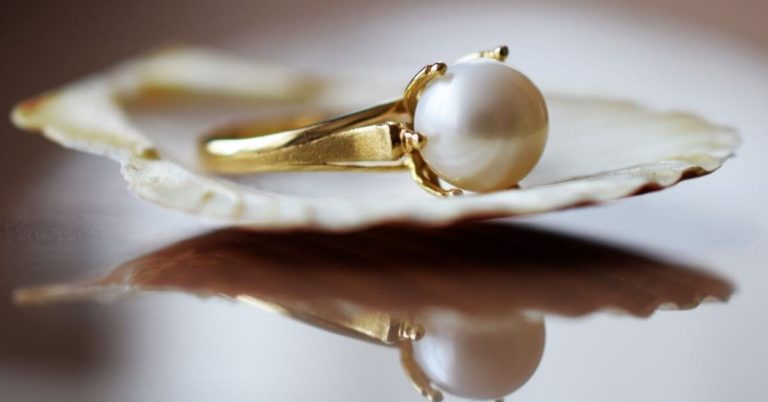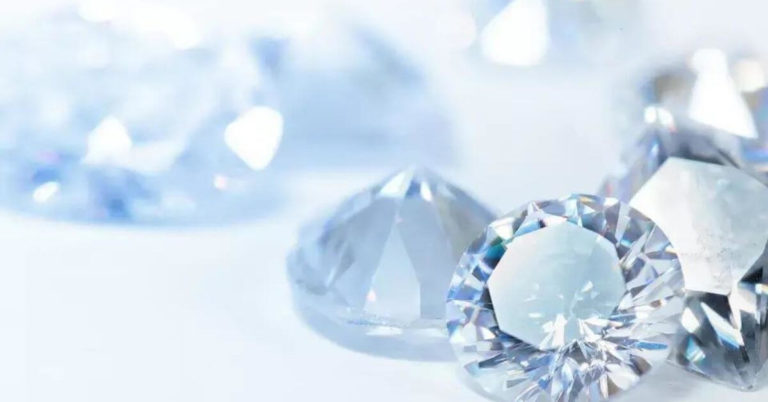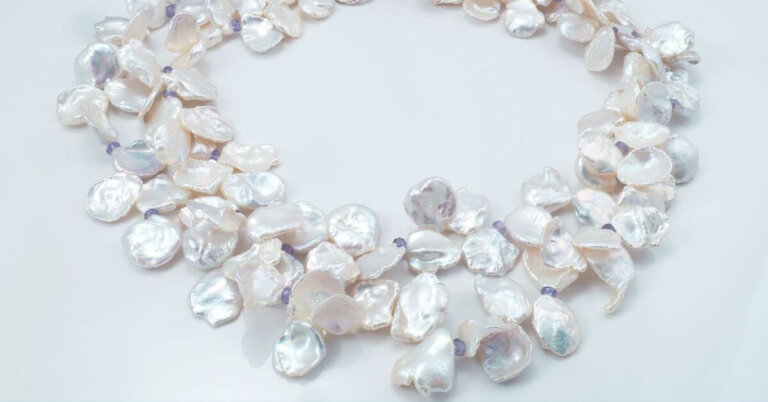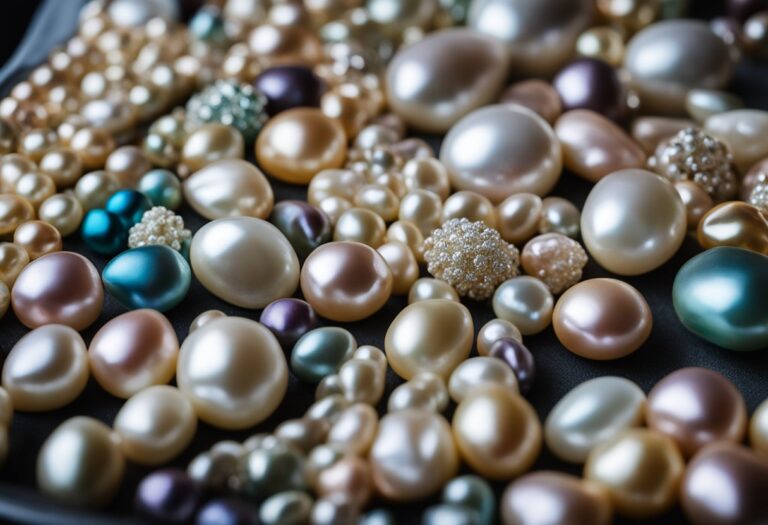Tahitian Pearls: Your Guide to Exquisite Beauty of The Sea
Tahitian pearls offer a touch of exotic elegance to any jewelry collection. Known for their mesmerizing dark colors, they range from graphite grey to iridescent peacock green, setting them apart from other pearls.
These pearls are not only unique in hue but also in their origin, as they are cultivated in the warm, clear lagoons of French Polynesia, primarily around Tahiti, which is the largest island in the region.

Your appreciation for these gems will deepen when you understand their formation process. Tahitian pearls come to life within the Pinctada margaritifera oyster, which is native to this part of the Pacific Ocean.
The meticulous care taken during the cultivation process of these pearls reflects in their luster and size, with an average diameter ranging from 8 to 18 millimeters.
When selecting Tahitian pearls, take note of their distinctive features. Pearls with high luster and smooth surfaces are highly sought after. Their unique overtones, a result of light reflecting off the pearl’s surface, give each pearl its characteristic charm.
Whether you’re searching for a statement piece or a subtle accent, Tahitian pearls are versatile enough to cater to a range of tastes and occasions.
Origins and Culturing Process
In the warm lagoons of French Polynesia lies the secret to the exquisite Tahitian Pearls. You’ll journey through their unique creation process, from oyster selection to the exciting moment of harvest.
Geographical Significance
French Polynesia is the birthplace of Cultured Tahitian pearls. The pristine waters here provide the ideal conditions for the Pinctada margaritifera, the black-lipped oyster, to flourish. Its remote location shields it from pollution, which is crucial for pearl development.
Pearl Oyster and Nucleation
The oyster species significant to Tahitian Pearls is the Pinctada margaritifera. For the nucleation process, a small bead and a piece of donor mantle tissue are surgically implanted into the oyster’s gonad.
This step is delicate; the oyster’s health is paramount. Expert technicians at Tahitian Pearl Farms carry out the process to ensure high-quality pearls.
Cultivation Period and Harvesting
After nucleation, oysters are returned to the sea and monitored. This cultivation period lasts about 18 months.
When the time comes, pearls are carefully extracted, showcasing their unique colors and sizes.
The harvesting of these Cultured Pearls marks the culmination of a patient wait and precise care, adding to the allure and value of Tahitian Pearls in the world.
Physical Characteristics

Tahitian pearls are treasured for their exotic appearance and rare qualities. Let’s explore their physical traits, which make each pearl unique and valuable.
Color and Overtones
Your Tahitian pearl’s body color can range from the quintessential naturally dark body to shades like gray, green, and blue. It’s the overtones—those subtle, additional hues—that create depth, enhancing the pearl’s allure with colors like peacock, silver, or dark green.
Shapes and Sizes
While you may picture pearls as perfectly round, Tahitian pearls offer a vast color range including baroque, which is an irregular, non-spherical shape. They vary in size too, but most Tahitian pearls measure between 8mm to 18mm, with those over 14mm being particularly rare.
Luster and Nacre Quality
The pearl’s pearly lustre is a key indicator of a quality Tahitian pearl. A thick nacre, at least 0.8mm deep, gives it a high luster–the shinier the pearl, the better the quality.
Surface and Grading
Surface quality is critical for grading. A flawless pearl is almost impossible, but fewer blemishes mean a higher grade. The guide to Tahitian pearl grading ranges from A to D, with A signaling the highest quality in terms of surface and luster.
Tahitian Pearl Jewelry

Tahitian pearl jewelry is renowned for its dark, alluring colors and each piece adds a touch of elegance to your wardrobe, from necklaces to earrings.
Popular Types and Settings
Tahitian pearls are often set into a variety of jewelry pieces. Your Tahitian Pearl Necklace might feature a single, large pearl as a stunning centerpiece or a strand of pearls for a classic look. In terms of earrings,
Tahitian Pearl Earrings are typically designed as studs or drop earrings, where their iridescence can catch the light beautifully. Pearl pendants and pearl rings are also widely sought after, each offering a unique way to display these gems from the ocean.
Pairing with Metals and Gemstones
Pairing your pearls with the right metals can enhance their natural beauty. White gold and silver are popular choices that complement the cool tones of Tahitian pearls.
When combining pearls with gemstones in a piece of Tahitian pearl jewelry, look for ones that won’t overshadow the pearl’s luster.
A simple engagement ring with a Tahitian pearl can be breathtaking when accented with subtle gemstones. The right clasp on a necklace not only secures the jewelry but can also be a decorative element.
Care and Maintenance
To keep your Tahitian pearl jewelry in perfect condition, treat it with care. Gently wipe your pearls with a soft cloth after wearing to remove any oils or residue. Store them separately from other jewelry to avoid scratches. For pearls set in rings or pendants, ensure the settings are checked regularly to prevent the pearls from becoming loose.
Remember, the unique charm of Tahitian pearl jewelry lies in its variety and the care you put into maintaining it. With proper care, your pearls will remain a cherished part of your collection for years to come.
Buying Guide and Market Information

When you’re in the market for Tahitian pearls, understanding quality and pricing, choosing the right vendor, and considering sustainable and ethical practices are crucial.
Understanding Pearl Quality and Pricing
Quality pearls, especially those from Tahiti, have distinctive features that affect their value. Characteristics to assess include luster, surface quality, shape, color, and size. Remember, Tahitian pearls are known for their unique dark colors and can command a wide range in retail prices. Here’s a basic pricing structure you might encounter:
- High Quality: Exceptional luster and surface, perfectly round, rare overtones — expect to pay a premium.
- Average Quality: Good luster, minor surface imperfections, off-round shapes — mid-range pricing.
Choosing the Right Vendor
When looking to buy, choosing the right vendor is pivotal for a worry-free delivery. Go for retailers known for quality, like PurePearls.com or those endorsed by industry mavens such as Robert Wan. Always check for:
- Reputation: Read customer reviews and industry endorsements.
- Policy: Confirm return policies and ensure orders ship fast.
Sustainable and Ethical Considerations
The pearl industry impacts local environments and communities. Choose vendors committed to sustainable and ethical practices to support the longevity of pearl farming. Look for:
- Certifications: Ensure your vendor supports sustainable cultivation.
- Fair Trade: Engage with businesses that advocate for ethical treatment of workers.
Remember that your purchase has a global reach, from supporting the livelihoods of local farmers to promoting eco-conscious pearl farming practices.
- Freshwater Pearl Symbolism and Spiritual Meaning: Unveiling Mystical Associations
- How to Choose The Best Earrings for Your Face Shape (with Pictures and Celebrities)
- Earrings Styles: Popular Types of Earrings with Pictures
- Freshwater Pearl vs Cultured Pearl: Unraveling the Mysteries
- Cultured Pearls: Real and Elegant Gem At Affordable Price






